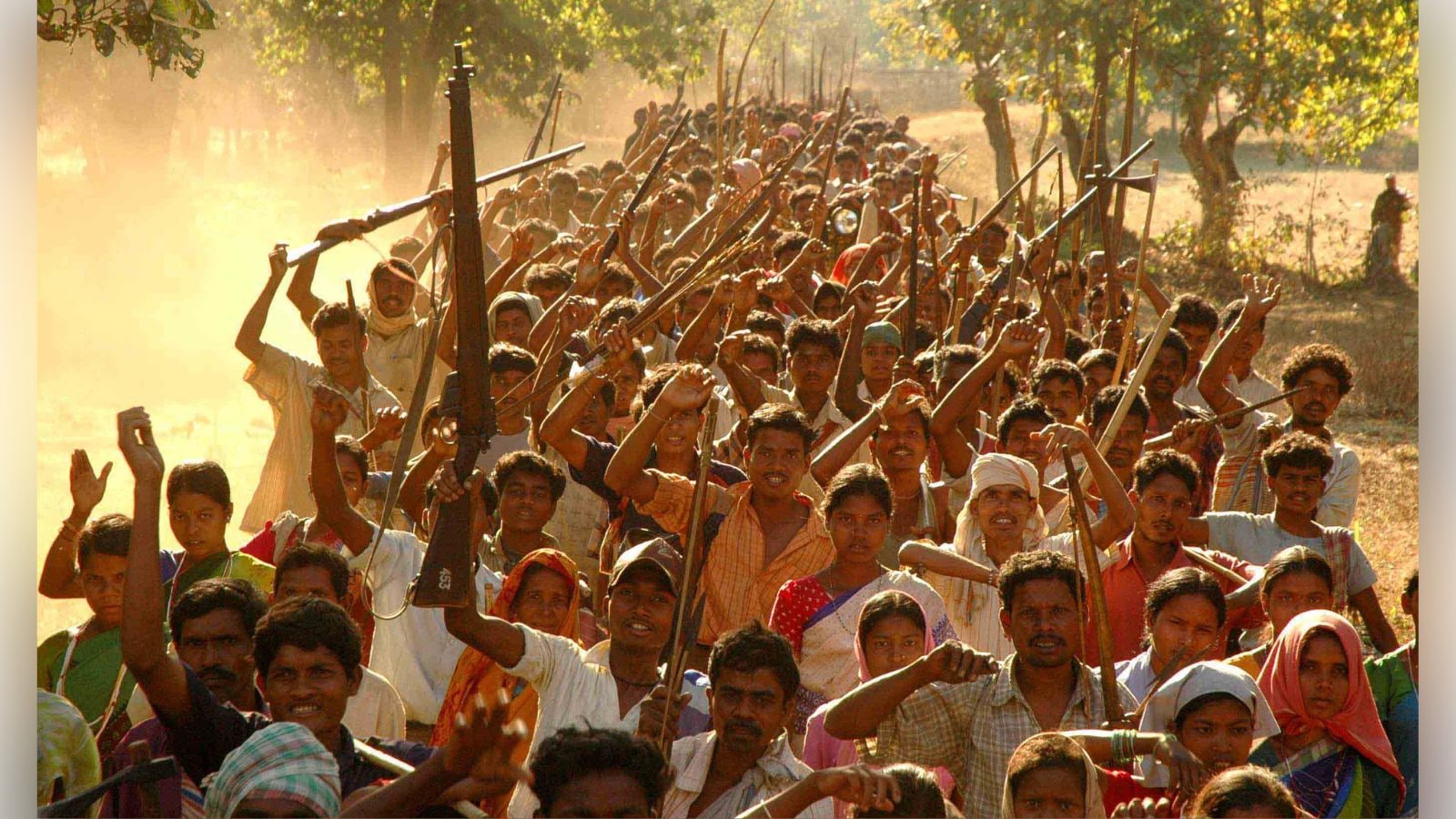 |
|
The article delves into the complex and controversial history of Salwa Judum, a state-sponsored militia formed in Chhattisgarh, India, to combat Maoist insurgents. Originating in 2005 as a peaceful “Jan Jagran” movement, initiated by villagers frustrated by the conflict between Naxalites and security forces in the Bijapur district, it rapidly transformed into a full-fledged militia supported by the government. Predominantly composed of tribal youths, Salwa Judum was armed and tasked with confronting the Maoist insurgency in the Bastar region. However, the period between 2005 and 2011, marked by the activities of Salwa Judum, was characterized by extreme violence, resulting in the deaths of hundreds of Maoists, villagers, and security personnel. Numerous villages were destroyed, and significant tribal populations were displaced, creating a humanitarian crisis within the region. The Chhattisgarh government at the time, led by the BJP under Chief Minister Raman Singh, actively supported and facilitated the Salwa Judum initiative.
The Supreme Court of India, in a landmark judgment delivered in July 2011 in the Nandini Sundar vs State of Chhattisgarh case, declared Salwa Judum illegal and unconstitutional, effectively disbanding the militia. Justice B Sudershan Reddy, who was part of the Supreme Court Bench that delivered the verdict, has recently been nominated by opposition parties as their joint candidate for the Vice-Presidential election. This nomination has sparked controversy, with Union Home Minister Amit Shah accusing Justice Reddy of “supporting Naxalism” and claiming that the Maoist threat would have been eradicated before 2020 had the Salwa Judum verdict not been delivered. Shah's statement highlights the deeply divisive nature of the Salwa Judum legacy and its continuing impact on Indian politics.
The emergence of Salwa Judum was precipitated by a specific incident in Bijapur, where Maoists looted ration and supplies intended for a police camp. Following the detention of villagers suspected of involvement, a group of villagers promised to assist the police in apprehending the actual perpetrators. This act of cooperation led to a broader movement aimed at preventing Naxal activities in the villages. However, Maoists retaliated by targeting the leaders of this nascent movement, leading to escalating violence. In June 2005, senior Congress tribal leader and former minister Mahendra Karma formally named the movement “Salwa Judum” during a meeting in Bijapur's Naimed village.
The ensuing violence resulted in the division of villages and families across Bastar, with many people forced to reside in relief camps guarded by Special Police Officers (SPOs) recruited by the state government. While Naxals attacked villagers perceived as revolting against them, the armed SPOs targeted individuals suspected of sympathizing with the Maoists, creating a climate of fear and distrust. Despite his involvement in the movement, Mahendra Karma suffered politically, losing his Dantewada seat to the BJP in the 2008 Assembly elections. Karma was later killed by Maoists in the Jhiram Ghati attack in 2013, along with other senior Congress leaders, further highlighting the dangers and instability prevalent in the region.
R K Vij, a former IPS officer who served as Inspector General of Police of Bastar Range during 2006-2008, explained that Salwa Judum was initiated by ordinary villagers frustrated by Naxal activities. He noted that the movement ultimately benefited Naxals by providing them with opportunities to recruit villagers who had been divided by the conflict. According to Vij, villagers joined the Maoist movement not due to political conviction but out of fear and the divisions created by Salwa Judum. Another police officer who served in Bijapur at the time of the movement's launch emphasized that Salwa Judum initially began as a people's movement focused on Jan Jagran and achieved some success. However, the officer asserted that the involvement of politicians seeking to exploit the movement for electoral gains ultimately undermined its effectiveness and prolonged the Maoist problem.
Nandini Sundar, the main petitioner in the Salwa Judum case before the Supreme Court, described the movement as an illegal state-sponsored vigilante operation that resulted in widespread human rights violations. She cited the burning of hundreds of villages, the displacement of approximately one lakh people to Andhra Pradesh and Telangana, the killing of hundreds, and the rape of many women. Sundar also noted that tens of thousands of people were forcibly held in Salwa Judum camps, characterizing this period as an unforgettable chapter in Bastar's history. She argued that despite the passage of time, many victims of Salwa Judum have yet to receive compensation or justice.
Shubhranshu Choudhary, a peace activist from Bastar, highlighted that the forced migration of villagers accelerated after the creation of Salwa Judum. He explained that while Maoists had begun driving out tribal village heads in the post-1980 period, this trend intensified after 2005. Choudhary estimates that approximately 90% of villagers in around 300 villages/forest settlements in Telangana and Andhra Pradesh are internally displaced people who migrated primarily after the intensification of the conflict following the launch of Salwa Judum. The article therefore demonstrates the complex interplay of local grievances, state action, and political maneuvering that characterized the Salwa Judum movement and its lasting consequences for the people of Bastar.
Source: A look at rise and fall of Salwa Judum amid Amit Shah’s Naxalism barb at Oppn’s Vice-President face
